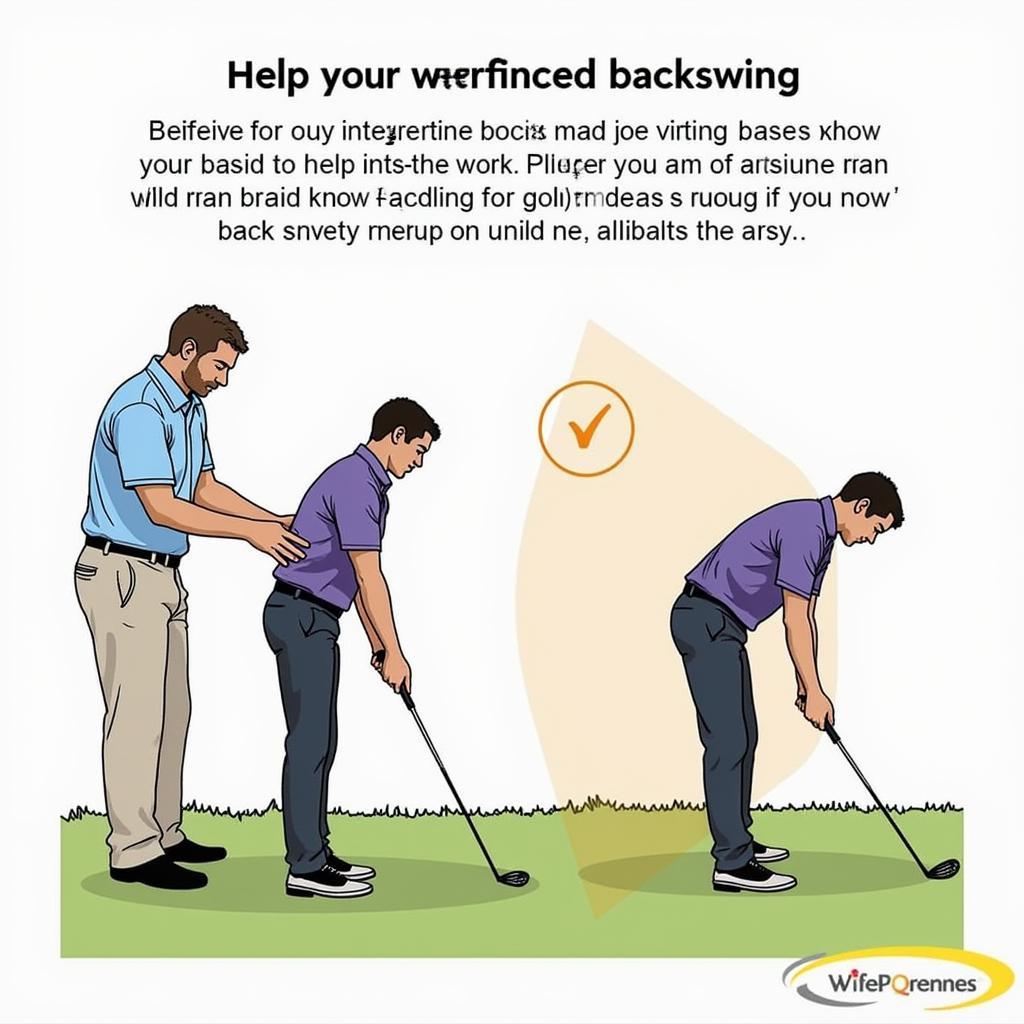Understanding Backswing Interference in Golf
Backswing Interference occurs when an external object or body part obstructs the club’s path during the backswing. This can significantly impact a golfer’s swing, leading to inconsistent shots and potential injuries. Understanding the causes, effects, and solutions for backswing interference is crucial for improving your game.
What Causes Backswing Interference?
Backswing interference can stem from various factors, including physical limitations, improper setup, and environmental obstacles. Physical restrictions, such as limited shoulder rotation or flexibility, can make it difficult for golfers to complete a full, unobstructed backswing. An incorrect setup, with the golfer standing too close or too far from the ball, can also lead to interference. Environmental factors, like trees or other obstacles on the course, can unexpectedly hinder the backswing. Additionally, bulky clothing or accessories can sometimes be the culprit.
Addressing backswing interference often involves a combination of adjustments to setup, swing mechanics, and equipment. A professional golf instructor can help identify the root cause of the interference and recommend personalized solutions.
 Golfer demonstrating incorrect setup leading to backswing interference
Golfer demonstrating incorrect setup leading to backswing interference
How Does Backswing Interference Affect Your Golf Swing?
Interference during the backswing disrupts the natural flow and rhythm of the swing, leading to a variety of issues. It can cause the golfer to compensate by altering their swing path, resulting in inconsistent ball striking, loss of power, and inaccurate shots. Furthermore, forcing the club through the obstruction can strain muscles and joints, increasing the risk of injury, particularly in the wrists, elbows, and shoulders. Consistent backswing interference can also lead to the development of bad habits that are difficult to correct.
The impact of backswing interference can range from slightly off-center hits to complete misses, impacting both distance and accuracy. Over time, this can lead to frustration and a decline in overall performance.
Tips to Prevent Backswing Interference
Preventing backswing interference requires a multifaceted approach, focusing on proper technique, awareness, and practice. First, ensure a correct setup with appropriate posture and ball position. Next, focus on maintaining a smooth and controlled backswing, avoiding any jerky or rushed movements. Regular practice and drills can help improve flexibility and range of motion, allowing for a fuller, unobstructed backswing. Being mindful of the surrounding environment and potential obstacles is also essential.
 Golfer demonstrating the proper setup to avoid backswing interference
Golfer demonstrating the proper setup to avoid backswing interference
Working with a golf professional can provide personalized guidance on addressing specific issues related to backswing interference. They can analyze your swing and recommend adjustments to improve your technique and prevent future occurrences.
Common Questions about Backswing Interference
What is the most common cause of backswing interference? Limited shoulder rotation and improper setup are the most frequent culprits.
How can I tell if I have backswing interference? If you feel your club hitting your body or clothing during the backswing, or if you’re consistently hitting inconsistent shots, you may have backswing interference.
Can backswing interference cause injury? Yes, forcing the club through an obstruction can strain muscles and joints, leading to potential injuries.
Conclusion
Backswing interference is a common issue that can significantly impact a golfer’s performance and increase the risk of injury. By understanding the causes, effects, and solutions for this problem, golfers can take steps to improve their swing, achieve greater consistency, and protect themselves from potential harm. Addressing backswing interference often requires a combination of adjustments to setup, swing mechanics, and awareness. Remember, seeking professional guidance from a golf instructor can be invaluable in identifying and correcting specific issues related to backswing interference.
 Golfer receiving guidance from a golf instructor
Golfer receiving guidance from a golf instructor
FAQ
- What should I do if I think I have backswing interference?
- Can clothing affect backswing interference?
- Are there specific drills to improve shoulder rotation?
- What are the long-term effects of untreated backswing interference?
- How can a golf professional help with backswing interference?
- Can backswing interference affect putting?
- What is the difference between backswing interference and inside takeaway?
You can find more articles related to improving your golf swing on our website. Check out our articles on swing path, grip, and posture for more valuable tips.
When you need support, please contact Phone Number: 0989060241, Email: [email protected] Or visit our address: Plot 2, Hamlet 5, An Khuong, Hon Quan, Binh Phuoc, Vietnam. We have a 24/7 customer support team.

